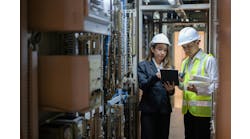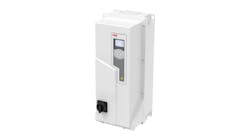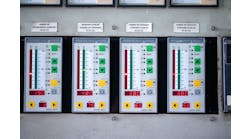While workforce challenges and supply-chain issues continue to plague component development across the industry, variable frequency drive (VFD) manufacturers hope that the increased use of industrial automation, driven by smarter, more efficient and more reliable designs, will help to close the knowledge gaps and reduce complexity for end users. The advanced customization that customers expect and the increased security issues presented by more connected technology is challenging manufacturers to design safer technology and, at the same time, push for easier and faster setup and installation. Six manufacturers—SEW Eurodrive, Nidec Control Techniques, Siemens, Schneider Electric, Bosch Rexroth and Danfoss—discuss factors driving the market for VFDs. For more on current trends affected the VFD market, read “Flexible design brings VFDs to wider market.”
The automation skills gap
“Labor shortages are everywhere today in services, manufacturing, supply chain and every other aspect of our lives,” says Leo Young, business development manager, drive and automation, at SEW Eurodrive. “This labor shortage has driven the market to invest in more ways to automate processes to help combat this inability to find people. The need to automate has never been more prevalent, but it can bring with it a large investment cost, which is driving the market to be more conscious of energy consumption, process optimization and safety, which all can help improve equipment ROI. Many drive manufacturers are implementing smarter drive platforms, with a wider range of features such as power monitoring and optimization, system analytics, advanced safety functions and robust communications for data collection and management. All of these features will be required to make automation more reliable, safe and agile to meet the demands of the new normal.”
The skills gap in the automation market is becoming more prevalent, emphasizes Young. “The knowledge base, which once was there, is no longer available, and system engineering has to be less complex and more user-friendly to fit the broad skill level in today’s market,” he says. “Providing system tools for easier configuration and startup of VFDs is a requirement. Providing digital motor integration that supports automatic drivetrain startup and collection of various motor sensors without additional installation work and providing simple tools, such as attached or pluggable key pads, removable memory modules for parameter storage or simple software wizards for easy configuration and startup, are necessary to provide the ease of use and reduced complexity required by today’s customer.”
Supply chain and material shortages
“Raw materials shortage is a reality today and can be a showstopper for the customer who requires quick delivery and availability,” says Young of SEW Eurodrive. “There is a greater demand for local manufacturing and inventory to help provide a quicker response to customer needs to offset the longer than expected lead times for raw materials, which seems to be a side effect of the COVID pandemic. VFD manufacturers need to manufacture and supply products for their local markets; this is almost a requirement in today’s market.”
Constant price pressure is a compelling market factor influencing the design of VFDs, says Joao Serralha, press officer for Nidec Control Techniques. “We face a situation of component supply shortages and price hikes along with high competition levels,” explains Serralha. “This leads to enormous engineering efforts to design affordable drives with the same, or possibly higher, performance than the previous generation.”
The supply chain is suffering in this industry like other industries,” says Navid Binesh, senior technical consultant at Siemens. “The availability of chipsets and power switches is a problem. Extended lead-times and increased price are inevitable.”
In the shorter term, the component’s technology will act more importantly in this supply chain challenging environment, says David Chen, senior offer manager at Schneider Electric. “VFD manufacturers will look for easier and more stable supply to ensure that their business is sustainable,” he explains. “Reevaluating a company’s resourcing strategy is becoming more common, as the level of components on hand two years ago may not be enough to meet the needs of today’s demand, placing production at risk.”
Custom, integrated drives
“The challenges this market is facing is the blurred line between VFDs and servo drives,” says Joaquin Ocampo, product manager for automation and electrification at Bosch Rexroth. “Customers want customized products with different lot sizes in a less amount of time. With the disruption of the supply chain, machines have to adjust to different size products, different design and different packaging to maximize production. Most of these changes take up valuable time to set up. To speed up setup time, many machine builders are opting to automate these changes. Plus, with available motor-integrated drives that can be mounted on the machine, they can reduce machine footprint and accomplish the automated setup.”
Cybersecurity
“Security of connected equipment will grow as more cyber hostage taking of systems occurs,” says Miles Mahaffy, manager of North America Application Development Center at Danfoss. “Losses to downtime or potential collateral damage due to downtime will focus IT and company executives to review what devices are connected and how are they being secured from external cyber threats. This will include VFDs as they are connected to motors that run critical processes.”






